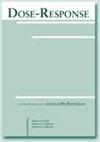右美托咪定抑制接受扁桃体切除术和/或腺样体切除术的学龄前儿童出现谵妄的中位有效剂量:一项剂量-反应回顾性试验
IF 2.4
4区 医学
Q3 PHARMACOLOGY & PHARMACY
引用次数: 0
摘要
接受扁桃体切除术和/或腺样体切除术的学龄前儿童出现谵妄(ED)的几率较高。本研究旨在利用 probit 回归分析法确定右美托咪定(DEX)抑制学龄前儿童 ED 的中位有效剂量(ED50)。本研究共检索了 140 份麻醉记录,并根据 DEX 的输注率分为 7 组:.2、.25、.3、.35、.4、.45 和 .5 μg-kg-1-h-1。小儿麻醉后谵妄量表(PAEDS)用于评估学龄前儿童的ED,PAEDS评分≥10分为ED。Probit 回归分析显示,DEX 的 ED50 和 ED95 分别为 0.31 μg-kg-1-h-1 (95% CI: 0.29-.35) 和 0.48 μg-kg-1-h-1 (95% CI: 0.44-.56)。Probit(p) = -2.84 + 9.28 × ln(剂量),(χ2 = 1.925,P = .859)。与无 ED 组相比,ED 组的 PAEDS 评分明显升高,心动过缓发生率明显降低(27.3% vs 54.1%,P = .02)。DEX能有效抑制接受扁桃体切除术和/或腺样体切除术的学龄前儿童的ED,但心动过缓是主要并发症。本文章由计算机程序翻译,如有差异,请以英文原文为准。
The Median Effective Dose of Dexmedetomidine for the Inhibition of Emergence Delirium in Preschool Children Undergoing Tonsillectomy and/or Adenoidectomy: A Retrospective Dose-response Trial
The incidence of emergence delirium (ED) is higher in preschool children undergoing tonsillectomy and/or adenoidectomy. The purpose of this study was to determine the median effective dose (ED50) of dexmedetomidine (DEX) for the inhibition of ED in preschool children by using probit regression analysis. A total of 140 anesthesia records were retrieved and divided into seven groups based on the infusion rate of DEX: .2, .25, .3, .35, .4, .45, and .5 μg·kg−1 ·h−1 . The Pediatric Anesthesia Emergence Delirium Scale (PAEDS) was used to assess ED in preschool children, and ED was defined as a PAEDS score ≥ 10. Probit regression analysis revealed that the ED50 and ED95 of DEX were .31 μg·kg−1 ·h−1 (95% CI: .29–.35) and .48 μg·kg−1 ·h−1 (95% CI: .44–.56), respectively. Probit(p) = −2.84 + 9.28 × ln (Dose), (χ2 = 1.925, P = .859). The PAEDS score was significantly increased in the ED group, and the rate of bradycardia was significantly decreased in the ED group compared with the without ED group (27.3% vs 54.1%, P = .02). DEX can effectively inhibit the ED in preschool children undergoing tonsillectomy and/or adenoidectomy, however, bradycardia was the main complication.
求助全文
通过发布文献求助,成功后即可免费获取论文全文。
去求助
来源期刊

Dose-Response
PHARMACOLOGY & PHARMACY-RADIOLOGY, NUCLEAR MEDICINE & MEDICAL IMAGING
CiteScore
4.90
自引率
4.00%
发文量
140
审稿时长
>12 weeks
期刊介绍:
Dose-Response is an open access peer-reviewed online journal publishing original findings and commentaries on the occurrence of dose-response relationships across a broad range of disciplines. Particular interest focuses on experimental evidence providing mechanistic understanding of nonlinear dose-response relationships.
 求助内容:
求助内容: 应助结果提醒方式:
应助结果提醒方式:


